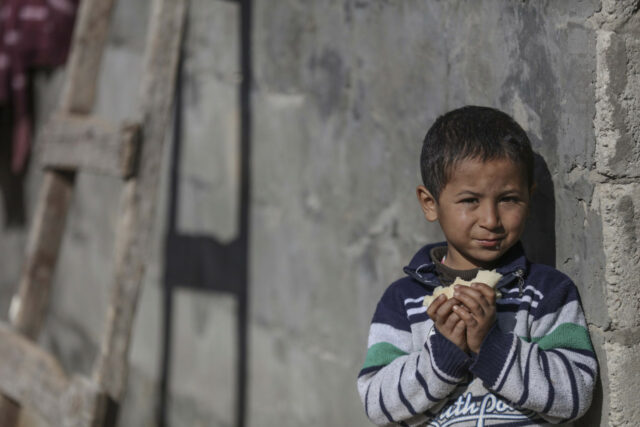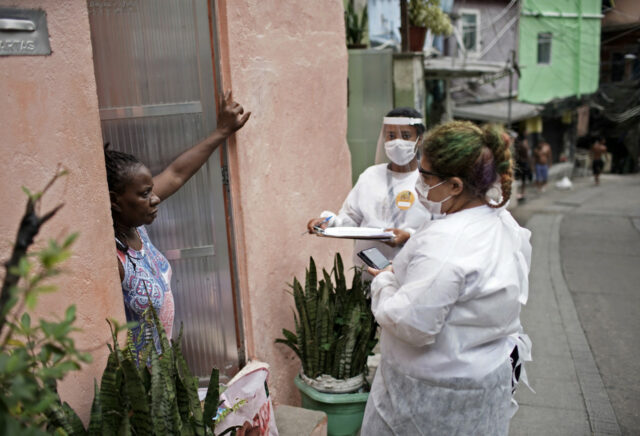A growing number of social enterprises sees crowdfunding as an alternative to seed capital. We talked to three small investors about how they choose their impact investments.

Crowdfunding is known as a tool for private individuals to invest small amounts in new or local ventures, but the European Venture Philanthropy Association recently noted in its report about the role of crowdfunding in investing for impact that crowdfunding platforms can be a catalyst for new forms of collaboration with different impact investors, such as foundations, impact funds or financial institutions, to maximise and scale their impact.
The EVPA also noted that crowdfunding may also serve as a litmus test for new innovations and delivering useful insights about consumer and investor appetite.
Equity-based crowdfunding amounted to $278mn in Europe according to the latest data from Statista (published in 2020). The pandemic has made crowdfunding investments drop in Europe, but the global crowdfunding market is expected to grow by 16% from 2020 to 2025, newswire AP reported.
It is easy to get engaged in the stories displayed on crowdfunding platforms: Enthusiastic entrepreneurs seeking to expand their businesses to improve their lives, or the planet. Photo’s, first names and anecdotes help bring business cases to life for potential investors.
In the Netherlands, a pioneer when it comes to impact crowdfunding, crowdfunding projects raised on average €33,000 last year. Three contributors tell us about their investments.
Interest caters for trust
Marlous van Oorschot first learned about crowdfunding during her career in charity. Over the years she and her partner have invested between €50 and €1,500 in five projects via Dutch platform Lendahand.
“To minimize financial risks I do my own due diligence before investing. I try to dig deeper than the information on the crowdfunding platform. One time I knew that a company had received a capital injection from shareholders a year earlier, but in their annual report it wasn’t clear how that money had been used. That’s a red flag. I decided not to invest.”
“To be fair, I didn’t drill down on what had happened. I probably should have. That might be a downside of crowdfunding platforms: If you have further questions about a project, it is not clear who you should turn to – the platform or the project directly?”
“Up until now I have received 4.5% interest on average on my investments, all loans with a duration between six months and two years. I know there are other platforms (like American Kiva or Dutch PlusPlus, ed) where you don’t get any interest at all. Does that mean you have more impact? I’m not sure.”
Looking for a gender lens
“Lending without interest feels more like donating to me. Working in charity I saw that giving or lending money without having to pay it back isn’t always a good idea. It often leads to projects not being finalized.”
“The fact that lenders pay a proper interest is a motivator to success, and it caters for trust between me as an investor and the entrepreneur.”
“Until now. I’ve mainly made crowd investments via Lendahand. My priority is to invest in companies led by and for women. I’ve experienced up close how women, including myself don’t get the same opportunities as men.”
“This said, Lendahand’s supply of projects is a bit limited. So I’m looking for another investment platform with a solid gender lens.”
You have to act fast
It happened only once that Eva Bosnjakovic didn’t get her investment back. In total, she has lent almost €30,000 to small business owners in developing countries via crowdfunding platforms.
“I don’t have a strict way of choosing which projects to invest in. I do it occasionally, when I have some money to spare. I have one principle: I never invest more than €1,000 in any one project, as I know I might not get it back.”
“You often have to act fast if you want to fund a project: some campaigns are very popular among investors. What I go for depends a bit on what’s available when I visit the crowdfunding sites. My last investment was a €1,000 loan to a solar power company in Ghana.”
“I do have a weak spot for businesses run by women. Mothers are often the ones who keep a family running – they prioritise saving up money to send their children to school. In my charity work for Wings of Support (the employee charity organization of KLM, where Bosnjakovic works as a stewardess, ed) I have witnessed that men who lose their income tend to spend their savings on alcohol; many women prioritise differently.”
Interest not always interesting
“Until now I have received between 3 and 6% interest on my loans to small business owners. To be honest, I do like the idea of making a small profit myself. But I also lend out money via Kiva (an American no-interest crowdfunding platform, ed); there you don’t get any interest.”
“In that case it has to be a cause or project I personally feel very strongly about. That’s why I always invest in companies run for and by women through Kiva: Projects in Congo, Paraguay, Palestine and Lebanon, in the sectors of clothing, retail, higher education, weaving and crafts, to enable women to become more independent.”
Personal touch
Bram Berkelmans made his first crowdfunding investment after reading about a business owner’s struggles to expand her business, a candy factory in the Philippines.
“I work in water management, so naturally I am extra passionate about clean water projects. That’s what I tend to go for when investing through crowdfunding. Or the very personal stories, like the woman with the candy factory. Simply a hard-working business owner trying to provide for her family. As a privileged Westerner, I have respect for people like her.
“Since 2013, I have invested in eleven different projects via the platforms Kiva, Lendahand and PlusPlus. I’m not so experienced in investing, so until now I’ve stuck to small amounts. In total, I’ve invested €3,200, all loans to small business owners in developing countries.”
“I’ve received everything from zero to a 7.25% interest rate. The higher the interest, the higher the risk. The project with the highest interest rate among my investments – funded via Lendahand – isn’t able to pay me back at the moment.”
“The crowdfunding platform has informed me about the reason why – Covid – about what the company is doing to recover the principal, and also that I will be compensated with a higher interest rate. To be fair, I think they have dealt with it pretty well.”
Between microcredits and banks
“What I like about crowdfunding is not only the obvious, to help entrepreneurs in developing countries who aren’t as privileged as I am. I also like that the platforms target companies that are often too big for microcredits and too small or not suitable for a bank loan.
“The intimacy and personal touch of crowdfunding campaigns gives me the idea that I can have impact. However, besides informal project updates in blogs and social media posts I don’t get any standardised feedback or formal report on whether my investment had the intended impact. That would be interesting to me as an investor.”
Read more
Dutch crowdfunding dropped in 2020





